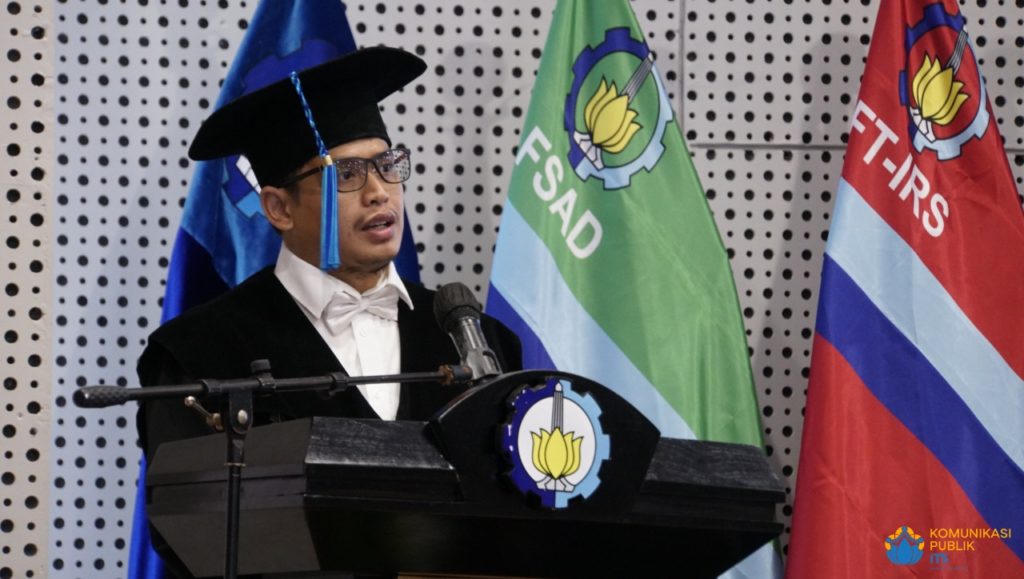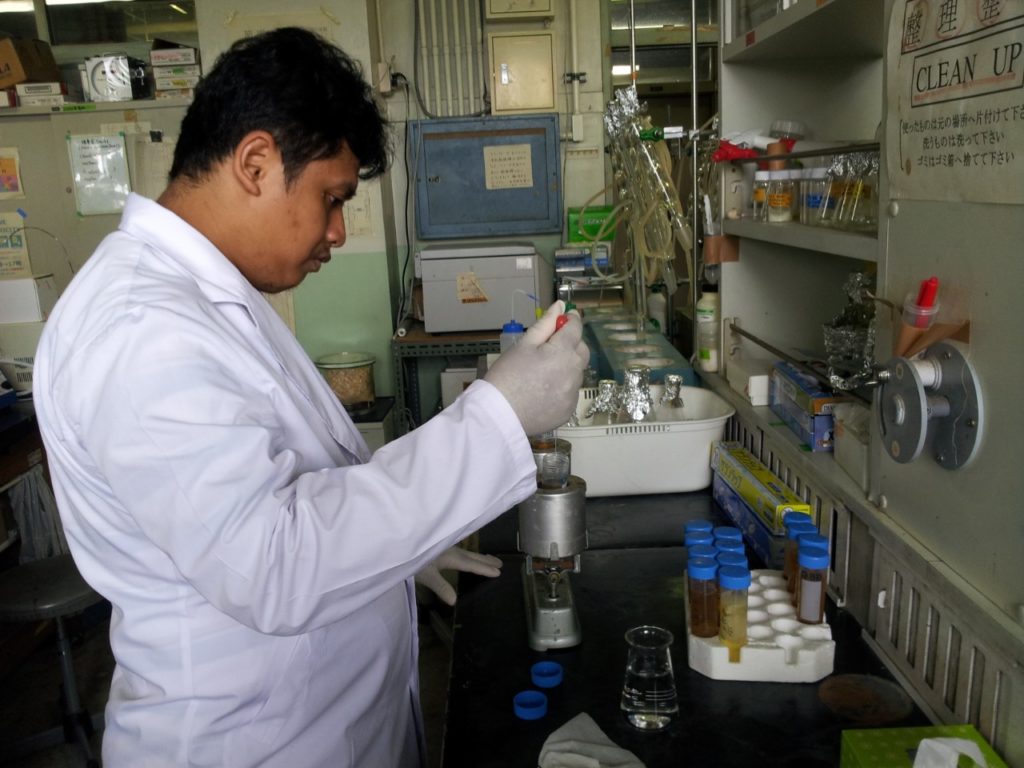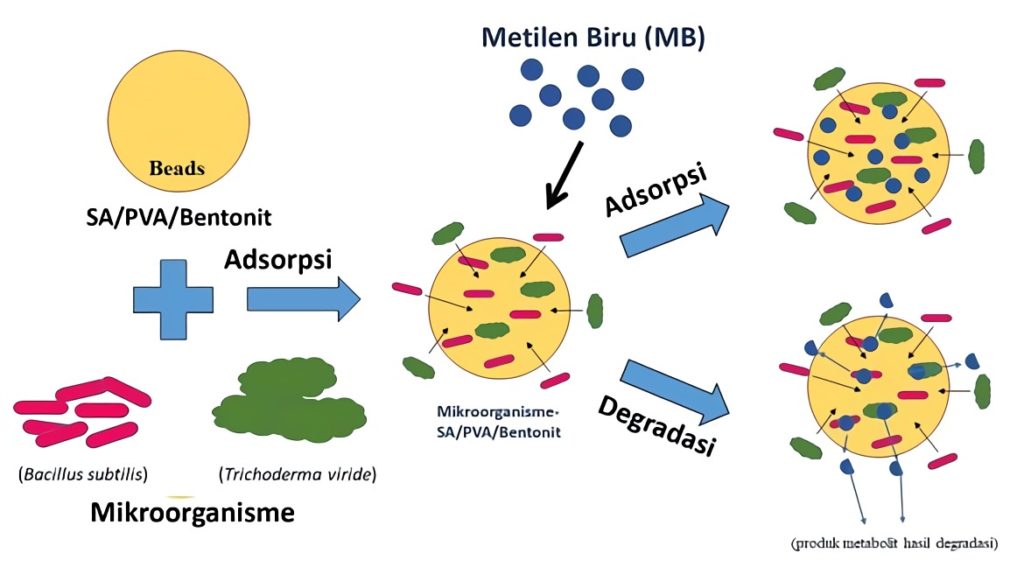ITS Professor Researches Wood Decay Fungus for Industrial Waste

Prof. Adi Setyo Purnomo SSi MSc Ph.D. from the ITS Chemistry Department when reading a scientific oration to be confirmed as the 147th Professor of ITS on March 15, 2022
ITS Campus, ITS News –Industrial waste that is still not handled properly can cause environmental damage and disrupt the lives of other living things. From that, a professor from the Chemistry Department, Faculty of Science and Data Analytics (FSAD) Institut Teknologi Sepuluh Nopember (ITS) Prof. Adi Setyo Purnomo SSi MSc Ph.D. innovated using wood rot fungi as a degrading industrial waste.
As an introduction, Adi conveyed the background on the use of fungi as waste biodegradation because mushrooms have many enzymes that can be used to decompose pollutants. In general, wood rot fungi are divided into two types, namely white wood rot fungi and brown wood rot fungi. “Because it is rarely studied, I was challenged to research brown wood rot fungi,” he explained.
Furthermore, the man who was born in Surabaya, on July 24, 1980, said that in theory, brown wood rot fungi contain hydroxyl radical compounds that can degrade the complex chemical structure of pollutant waste. In addition, Adi found that brown wood rot fungi, especially the species Fomitopsis Pinicola, were known to have very high waste degradation abilities.

Prof. Adi Setyo Purnomo SSi MSc Ph.D. while conducting research on brown wood rot fungi as material for biodegradation in the ITS Chemistry Department laboratory
Adi revealed that mushrooms have high environmental adaptabilities, such as those containing high toxicity, low pH, and few nutrients. Therefore, fungi are considered suitable to be degrading agents for chemical wastes. “But the duration of this biodegradation process takes a long time, namely two weeks,” said the husband of Sri Fatmawati SSi MSc Ph.D.
To speed up the biodegradation process, Adi combined the fungus with bacteria that have high biodegradabilities. Such as Pseudomonas Aeruginosa, Bacillus subtilis, and Ralstonia Pickettii. In addition, Adi also makes products in the form of super-adsorption containing fungi and bacteria as degrading agents. “I made super-adsorption so that the waste degradation process becomes faster,” said this father of four children.
In its implementation, this super-adsorption with fungi and bacteria is applied to textile waste from the batik industry. In principle, the super-adsorption material will be fed into a degradation reactor containing textile waste and other adsorbent materials such as activated charcoal, manganese, and zeolite. Then, the reactor is allowed to work for approximately one week.

Illustration of a mixed culture of fungi and bacteria as the base material for super-adsorption for the biodegradation of industrial waste
Even so, he continued, the super-adsorption does not yet have a high level of efficiency. Adi said that the low efficiency was caused by the difficult super-adsorption production so that the waste that had been fed into the reactor was still in a concentrated condition. “The difficulty is because it contains fungi and bacteria, so the manufacturing process is still one by one and in sterile conditions,” explained the 147th ITS professor
For future research, Adi said that he would continue to develop industrial waste degradation processes such as plastic waste degradation by utilizing various potentials in nature. “Hopefully, through these studies, it can be implemented in real life perfectly,” he concluded hopefully. (ITS PR)
Reporter: Regy Zaid Zakaria
Related News
-
Anticipating Lost Pet Dogs, ITS Students Invent a Tracking Bag
ITS Campus, ITS News —Losing a pet is a sad thing for its owners. To anticipate this, a team
March 17, 2022 07:03 -
ITS Students Integrate Smart City Service Features Through Visionaries
ITS Campus, ITS News — Institut Teknologi Sepuluh Nopember (ITS) continues to prove itself as a home for talented
March 17, 2022 07:03 -
ITS Students Innovate Eco-Quake Building Concept
ITS Campus, ITS News — Along with the development of technology, the construction sector has also experienced rapid growth
March 17, 2022 07:03 -
Great, ITS Successfully Becomes Overall Champion of the 2024 Indonesian Ship Contest
ITS Campus, ITS News — Proving itself as a home for champions, Institut Teknologi Sepuluh Nopember (ITS) managed to
March 17, 2022 07:03
